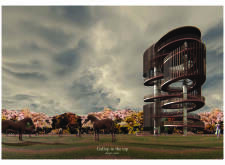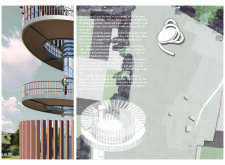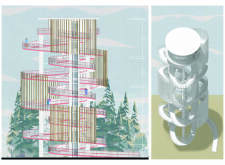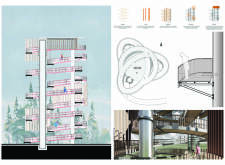5 key facts about this project
Gallop to the Top: Kurgi's Rhythms integrates the movement of horses with a thoughtful design set within the landscape of Kurgi. The structure serves a dual purpose: providing accessibility while emphasizing the ecological importance of the area. The concept draws directly from the rhythms found in horse gaits, combining them with the building’s upward flow to create an experience that links architecture and nature.
Vertical Structures
Three vertical structures are a key element of the design, positioned to support an effective circulation system. These structures not only provide support but also symbolize the cyclical movements present in nature. The rhythm of three beats is reflected in the upward journey through the building, enhancing how users navigate through a series of ramps that rise in a pattern reminiscent of horse movement.
Ramp System
The ramp system plays an important role in the design, allowing for easy movement between levels. An elevator within one of the vertical structures highlights the aim of making the building accessible to everyone. This approach ensures that the architecture can accommodate different needs while maintaining a clear and engaging design.
Connection with Nature
The project strengthens its bond with the environment by incorporating three metallic cores that look like tree trunks. These cores support horizontal arms that take the form of branches, which in turn hold up the ascending ramp. This design choice aligns the building with the natural surroundings, showing a respect for the local landscape and enhancing the connection between the structure and nature.
Vantage Point
At the top of the building, a vantage point offers wide views of Kurgi’s landscape and invites users to connect with the space where horse preservation efforts occur. This elevated area enriches the experience, allowing a greater appreciation of the site's ecological significance. Sightlines and natural light have been carefully considered, adding to the overall spatial experience and allowing the architecture to resonate with the environment.






















































